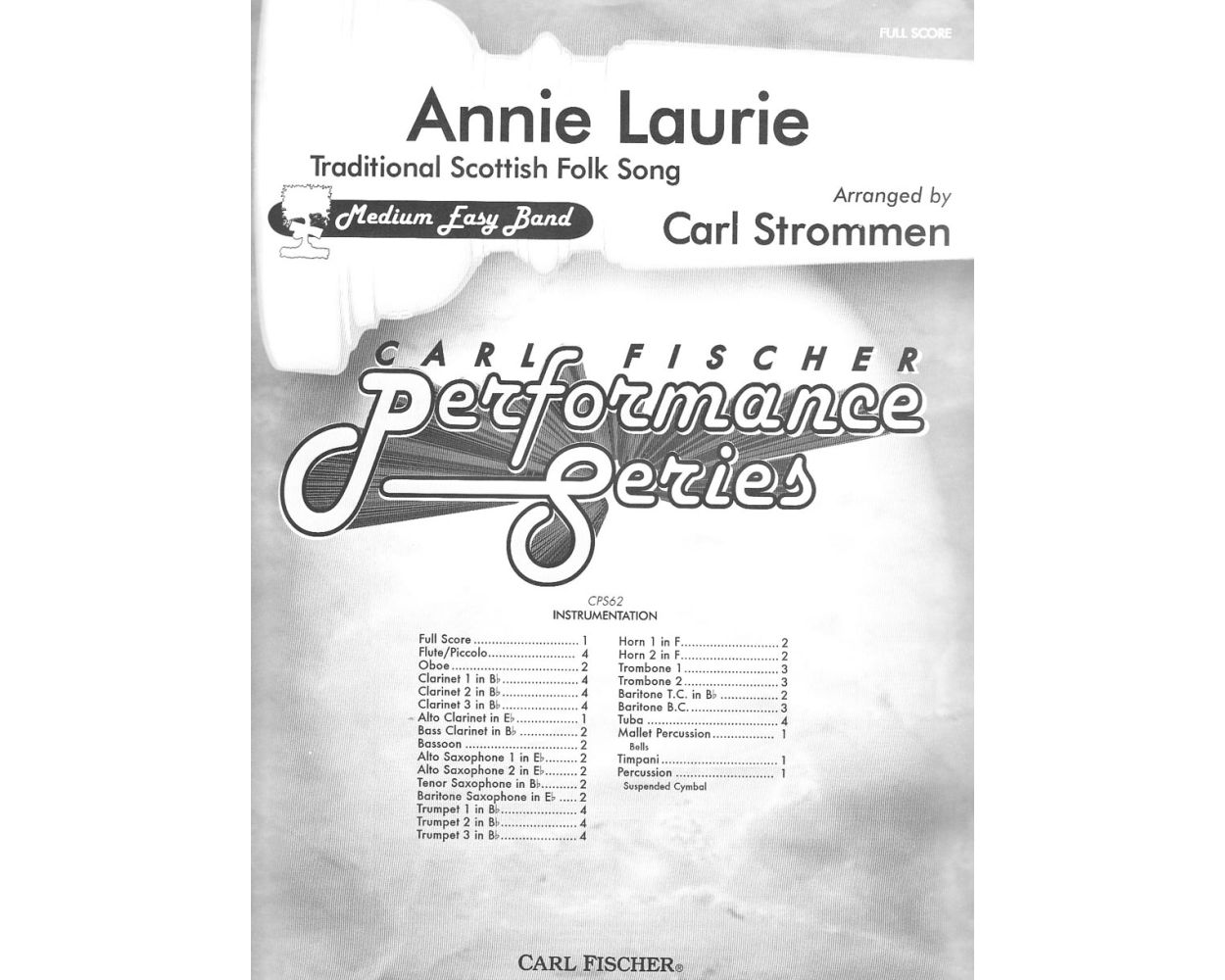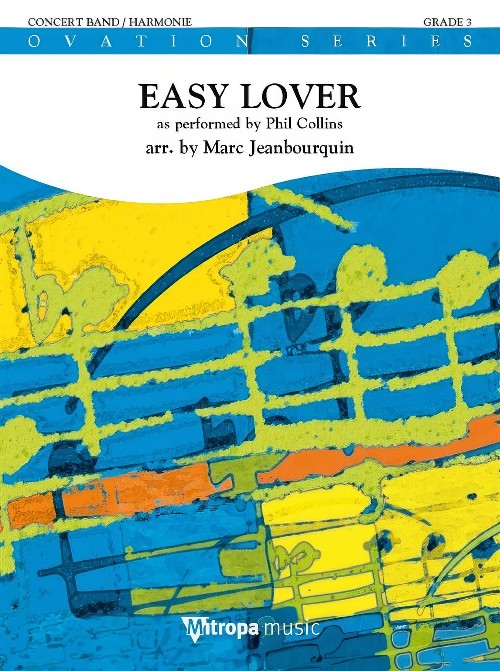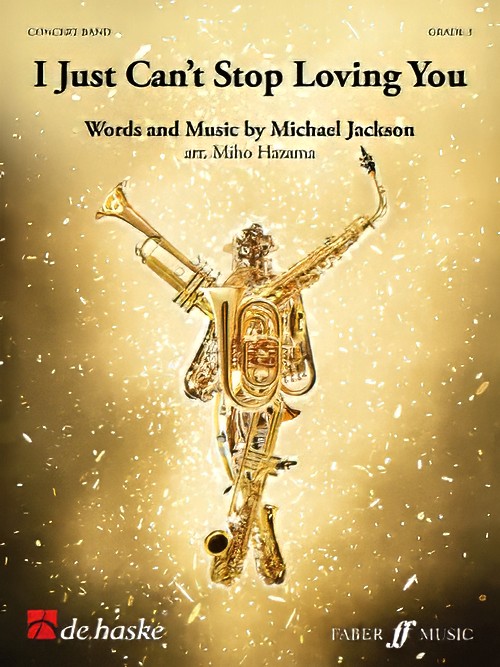Results
-
 £58.00
£58.00Annie Laurie - Anonymous
The song "Annie Laurie" was written to her by William Douglas, and amended by Lady John Scott. This song was a favorite with Scottish soldiers during the Crimean War. Composer Carl Strommen gives us a wonderful new setting of this popular folk song that explores all of the glorious colors of the modern concert band. A great change of pace piece for any concert and a great way to improve the musicianship of your students.
Estimated dispatch 12-14 working days
-
 £133.80
£133.80Voi Voi - Georg Elgaaen
"Voi Voi" was written by Georg Elgaaen for the very first edition of the Melodi Grand Prix in Norway in 1960. Nora Brockstedt performed the song, which became a huge success. The song is still one of her biggest hits and an important reason why she became a major icon in Norwegian entertainment music during the 1950s and 1960s. The song is typically lively and colorful, and this arrangement offers challenges in most instrument sections!Georg Elgaaen (1923-2017) was a Norwegian musician, composer, and lyricist primarily active in the fields of entertainment and popular music. He wrote music for a number of artists and was also active as an orchestra leader and arranger.
Estimated dispatch 7-14 working days
-
 £84.99
£84.99Easy Lover
This song, performed by Phil Collins and Philip Bailey, was a smash hit in most of Europe and North America. The peculiar video - a video making a video of making a video stood out from the crowd and helped elevate the song to a No. 1 and all-time hit. Collins' legendary songwriting talent and longstanding career in the music industry has made him a name known by all generations. An ideal song for any concert!
Estimated dispatch 7-14 working days
-
 £104.99
£104.99Variations on Shalom Chaverim - Andreas Ludwig Schulte
Shalom Chaverim is an ancient Hebrew (farewell)song, which was originally sung at the end of a celebration or meeting. It was and is mostly sung as a round. Freely translated the words mean "Goodbye, friends, goodbye and see you again!". The varying moods at a parting have been captured very well by Andreas Schulte in his arrangement 'Variations on Shalom Chaverim'. The composer himself says about the song, 'Although the melody is in a minor key, the overall atmosphere in the song is positive. one wishes each other all the best. Saying goodbye, however, also hurts. When you slow down the pace of the melody and add 'blue notes' in the harmonies, this can be sensed immediately.'Schulte refers here to the first variation. The second variation is very intense with possibly even deeper-felt emotions. 'Variations on Shalom Chaverim' ends on a cheerful and positive note, in fast tempo, and with oriental elements in the melody: 'L'hitra'ot, Shalom' (See you again, and farewell!).
Estimated dispatch 7-14 working days
-
 £149.40
£149.40Deck the Halls
The original Welsh song Nos galan dating back to the sixteenth century, has become an international Christmas carol with the English lyric Deck the hall with boughs of holly.The song does not offer much in terms of variation, but I have tried to construct a short piece where one can see that the song still offers itself to a wide array of stylistical treatments.The opening is almost like a Christmas Overture, before it wanders in to a renaissance-like style.The middle section offers a much more lush and lyrical rubato treatment, with lots of color and thick harmonization.The end then turns the tempo even more up than at the start of the piece, and brings us through a big band ending with long soaring lines.- John Philip Hannevik -
Estimated dispatch 7-14 working days
-
 £149.99
£149.99Caledonia - Oliver Waespi
In Caledonia, Oliver Waespi adapted three well-known Scottish folk songs into a rhapsodic suite for wind orchestra. The first, rather humorous song, The Devil Came Fiddling Through the Town, tells the story of a devil who, as he passes through the streets of the town, catches the tax inspector and carries him off, much to the delight of the inhabitants. The second song, Ye banks and braes, is gentle and melancholy and based partly on the folk song Hey, tuttie tattie. Oliver Waespi took a symphonic approach to the adaptation of these lovely songs, which makes this a unique and innovative suite that can be performed at a concert or contest. Theindividual parts can also be performed separately.
Estimated dispatch 7-14 working days
-
£52.50
Horse and Buffalo - Mike Hannickel
Take your band to the great North American plains, to a post-Columbian Sioux village. A tone poem describing the life of a young Sioux, Horse and Buffalo is based upon actual Native American melodies. A lullaby, an honor song, and a courting song are the basis of this dynamic arrangement. Your young players will be especially intrigued by the energetic, meter-shifting honor song! Great possibilities for cross-curriculum work with Social Studies teachers. One of the most memorable pieces you'll perform this year!
Estimated dispatch 7-14 working days
-
 £84.99
£84.99Easy Lover (Concert Band - Score and Parts) - Jeanbourquin, Marc
This song, performed by Phil Collins and Philip Bailey, was a smash hit in most of Europe and North America. The peculiar video - a video making a video of making a video - stood out from the crowd and helped elevate the song to a No. 1 and all-time hit. Collins' legendary songwriting talent and longstanding career in the music industry has made him a name known by all generations. An ideal song for any concert! Duration: 3.00
Estimated dispatch 7-14 working days
-
 £102.99
£102.99I Just Can't Stop Loving You (Concert Band - Score and Parts) - Jackson, Michael - Hazama, Miho
This number topped the U.S. chart as the lead release single from Bad. Siedah Garrett, who sang the duet, was a protg of Quincy Jones with whom Michael tag-teamed for three solos on Off the Wall. (Garrett is also renowned as one of the writers of the song Man in the Mirror," the fourth single which carries a strong message.) Japanese fans still remember this song being performed as an encore during the Bad World Tour in 1987. The straightforward, sweet love song starts out quietly and gradually takes on heat, unfolding a wonderful musical sentiment. The performance of the arranged version also strikes the audience with an imposing world of sound comparable to that of a full orchestra.Duration: 5:00
Estimated dispatch 7-14 working days
-
£89.99
Auld Lang Syne Wind Band Set (Score & Parts)
Whereas 'Auld Lang Syne' may be considered the best-known Scottish song ever, yet at the same time it is an obscure one, for there are but few people who know the complete text by heart. After the familiar 'Should auld acquaintance be forgot .....' many people take their refuge to lyrics like 'rum tee dum ta dee ..... lah, lah, lah ........... for auld lang syne'. Even in Scotland only a handful of persons know the entire text and are able to give a correct rendering of it. The current lyrics have been attributed to the Scottish poet Robert Burns. Burns, however, he did not write the whole poem : after he had heard an old man sing the centuries-old Scotch ballad, he wrote it down and added a number of stanzas (1788). Historical research teaches us that the ballad served many purposes, both political and religious. Nowadays, 'Auld Lang Syne' is sung as a Christmas Carol and it is also sung on New Year's Eve at the turning of the year. Apart from that, though, the song is also sung on many other occasions - sometimes with different lyrics, which usually have Love, Friendship and/or Parting as their themes, as these go well with the fascinating melody. In this arrangement a low-sounding solo instrument is central. The harmonization in the accompaniment fits in perfectly with the sentiments this song will evoke. Should auld acquaintance be forgot And never brought to mind? Should auld acquintance be forgot. And days of auld lang syne? For auld lang syne, my dear, For auld lang syne, We'll take a cup of kindness yet, For auld lang syne. 03:00
Estimated dispatch 7-14 working days
